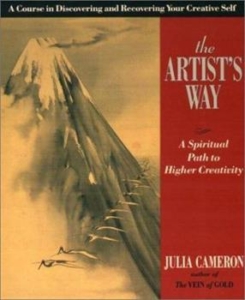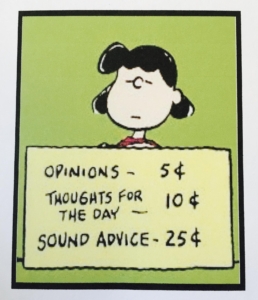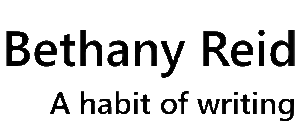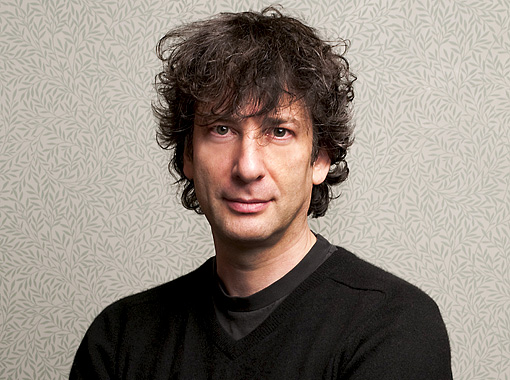 The Artist’s Way just dropped a new insight into my in-box.
The Artist’s Way just dropped a new insight into my in-box.
For years I’ve been proudly describing myself as a “laissez faire” parent and teacher. Friend. Spouse. “A policy or attitude of letting things take their own course, without interfering.” I do it in my writing life, too, and I’ve written about it before. I’m not that unusual — most of us do our very best in our lives to avoid confrontations. But a story without confrontations would not be a story. And a life without confrontations? Hmm. Who wants to stay on the ocean floor, a spineless mass of jelly?
Why is it so hard for me to set boundaries and enforce them with my daughters? (Why do I think silence is a good strategy when Emma and I don’t agree on how she ought to be spending her time?)
Why am I not submitting my finished stories and poetry? (Why am I so reluctant to call any of it “finished”?)
Part of this insight, I can chalk up to my daughter Pearl. After taking some time off from college classes, after spending last quarter (finally enrolled again) taking choir and yoga, this quarter she enrolled in Math 90 and in — Journalism.
Journalism? I was shocked. She explained that all the English 102 classes were filled, and that journalism was equivalent, so why not?
I was shocked because, years ago, I wanted to take a journalism class, and I was afraid to. I didn’t label it as fear. I found other ways to rationalize not registering for it. But when it comes right down to it, I know that the thought of writing for a college newspaper, submitting articles for a college newspaper (being rejected!), writing under deadline, interviewing complete strangers — all of that just wigged me out.
Not Pearl. She decided to write her first article about President Obama’s State-of-the-Union idea to make two years of community college education free. She interviewed a classmate. She did an email interview with her favorite teacher. She read the State of the Union address (out loud, to me!), and she did some research via the college website on the number of students enrolled, the number already receiving financial aid, etc.; and she wrote the article! I sat up with her (Sunday night, until 1 a.m.) when she told me she needed moral support (she ASKED for moral support!). I even typed it for her. She submitted it to her journalism teacher, and (as required) to the Edmonds Community College student newspaper. We went to bed. No big deal.
This week she has to write another article. We had a homework date last night (Emma, too), and Pearl went back to the college website, picked out the blood drive scheduled for next week, and wrote a list of who she might interview. And, for the day, she was done. On to math homework.
Okay, okay, I know that from the outside it looks like I get a lot done. But there are also a lot of things I avoid. Why do I avoid them? Why do I make excuses (too busy, too old, must watch 3 episodes of The Blacklist, not polished enough yet, not good enough yet…)? Today I realized that it is just fear.
Among the most helpful exercises in The Artist’s Way, for me, has been simply writing lists. Have you ever had that experience of learning a new word — kerfuffle — and then suddenly seeing it everywhere? The word existed before you were conscious of it. Presumably, it did not suddenly begin appearing everywhere. It’s just that it has now become visible to you. That’s what making lists does for me. Things that previously resided in an amorphous heap titled, “stuff that makes me nervous,” become visible.
Write down 10 things you would do if you had the money…if you had the time…if you weren’t afraid. Make it as simple as possible, fill in the blank and repeat:
If I had the money I would ______________________________.
If I had the time I would __________________________.
If I weren’t afraid I would _____________________________.
10 X each.
Now, pick one thing (just one!) and do it. If that’s too difficult, pick one aspect of one thing and do it.
What are you afraid of?
If what you’re avoiding is writing, check out My 500 Words. (Thanks to Jeff Goins for that.)
 Elizabeth Bishop is one of my favorite poets. This poem is one I would like to memorize. Do I have the cheek to use it as a model?
Elizabeth Bishop is one of my favorite poets. This poem is one I would like to memorize. Do I have the cheek to use it as a model?
 I awakened late to the work of the Swedish poet
I awakened late to the work of the Swedish poet 

 The Artist’s Way just dropped a new insight into my in-box.
The Artist’s Way just dropped a new insight into my in-box.